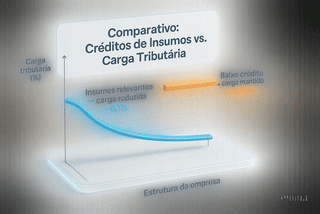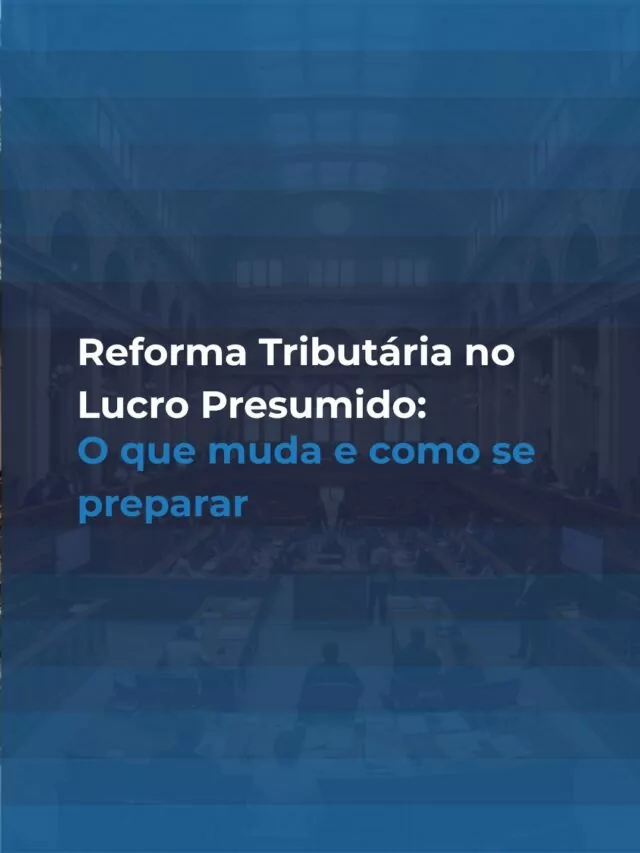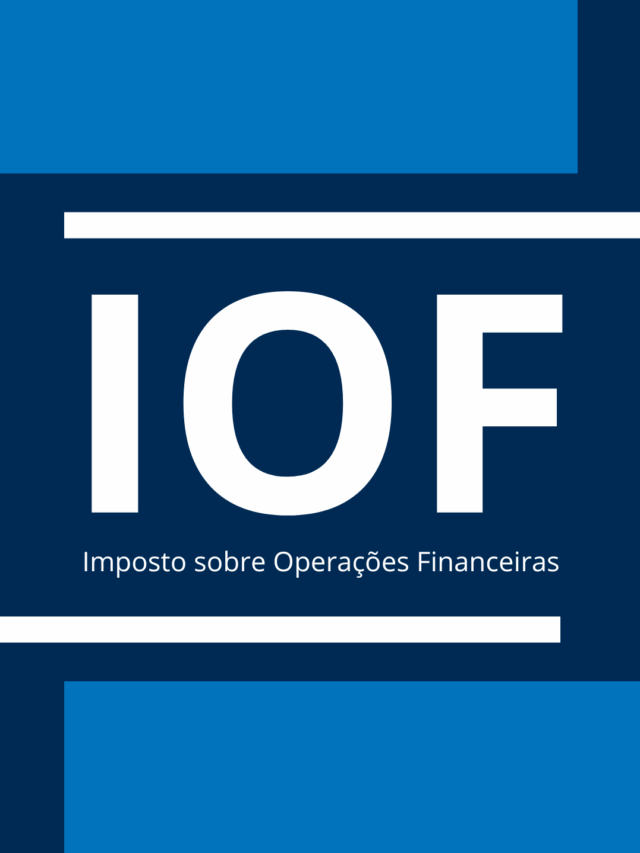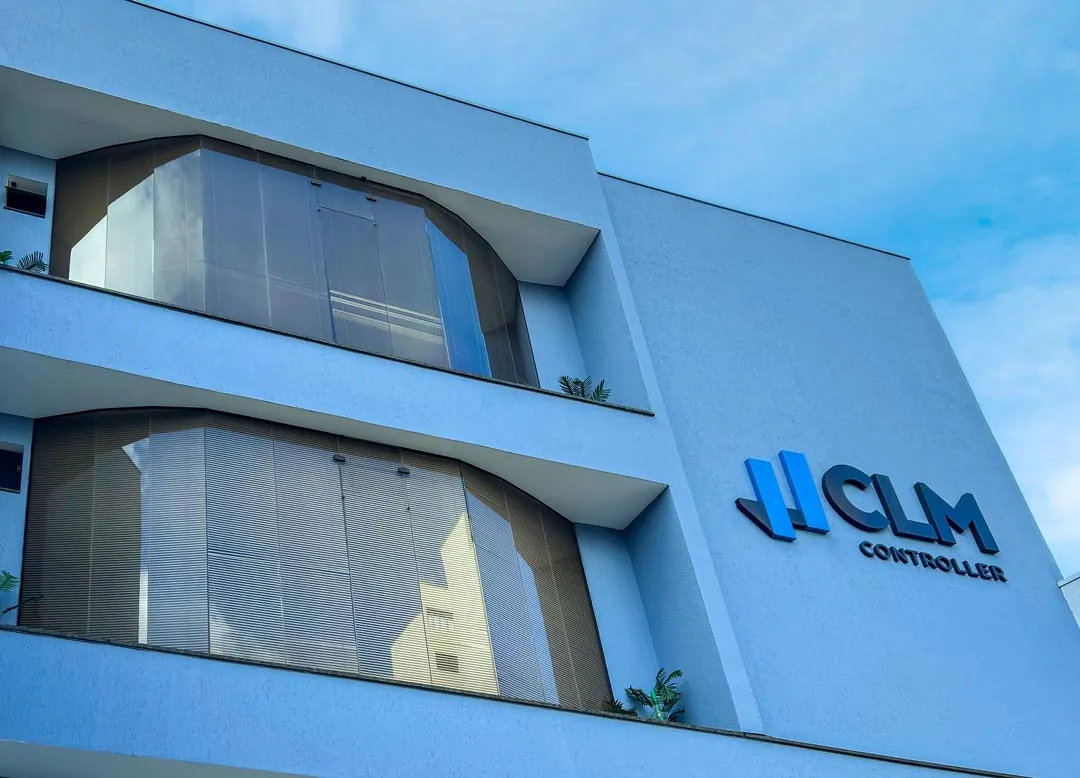A tax reform in Presumed Profit is one of the topics that has attracted the most attention from entrepreneurs and accounting professionals in recent months.
With the approval of the Constitutional Amendment 132/2023 and the publication of Complementary Law 214/2025Brazil is moving towards a profound change in the model of taxation on consumption - and this directly affects companies opting for the Presumed Profit regime.
Although the reform does not alter the structure of the IRPJ and CSLL In the presumptive regime, there are significant changes in taxes on turnover and consumption, such as the replacement of the PIS/COFINS by CBS and ICMS/ISS by IBSThese require extra attention and good tax planning.
In this article, we'll explain clearly and objectively which taxes change and which remain the same, as well as showing you how your company can prepare.
Understand the impacts of the tax reform for Presumed Profit companiesFind out how the load can be increased or redistributed and see practical examples to adapt your strategy.
Listen to our podcast where we advise business owners and accountants on how to prepare for the transition by 2032, stressing that adaptation will be essential to remain competitive and avoid losses.
Will the Tax Reform put an end to Presumed Profit?
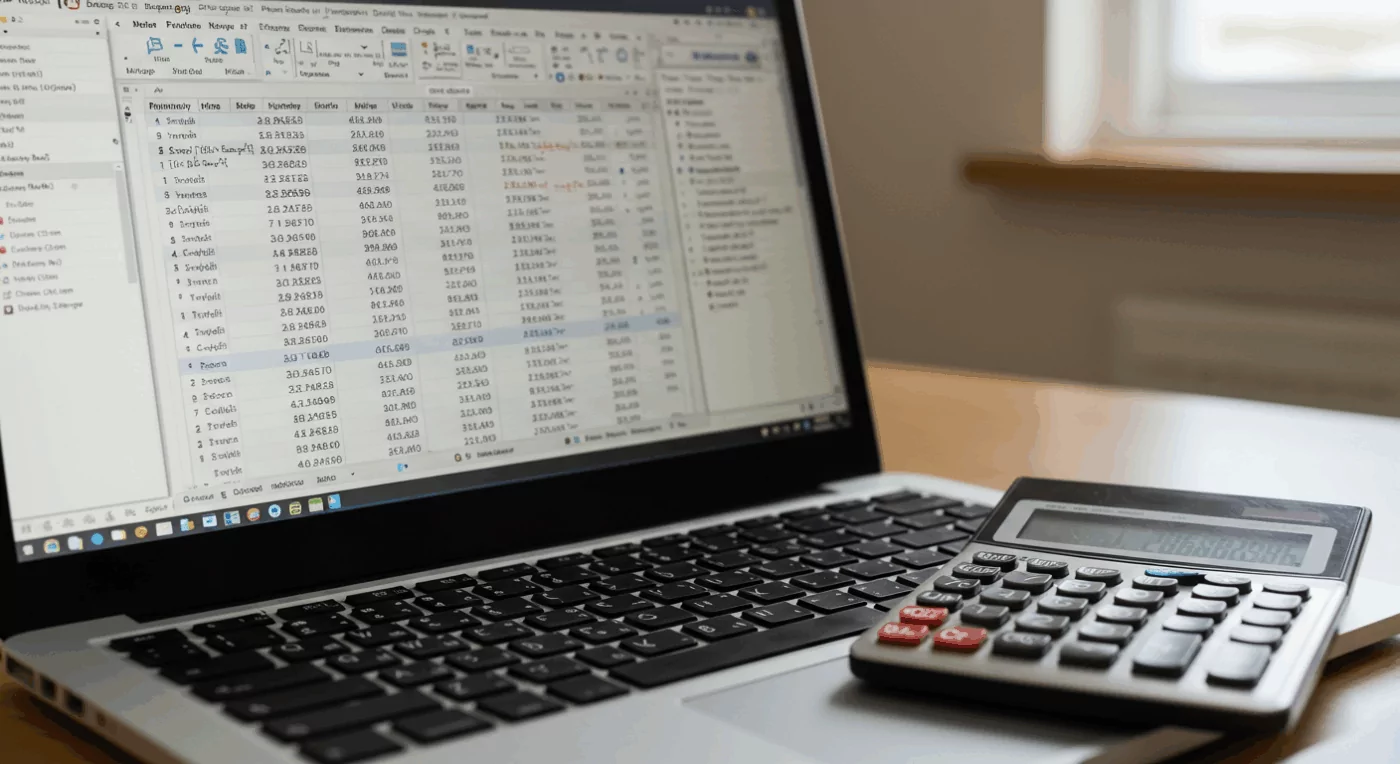
No. A tax reform does not end the Presumed Profit system. The distinction between Presumed Profit and Real Profit remains valid, especially for calculating IRPJ (Corporate Income Tax) and CSLL (Social Contribution on Net Profit), which will continue to be calculated in the same way as today.
In other words, the presumption of profit rules based on gross revenue - 8% for commercial activities and 32% for services, for example - remain unchangedas well as the percentages applied to calculate CSLL.
Therefore, there will be no changes to the IRPJ/CSLL calculation basis for Presumed Profit companies. The reform's changes focus on consumption taxes, as we'll see below.
What changes in PIS/COFINS (CBS) for those on Presumed Profit?
The most significant change in Tax Reform 2025 in Presumed Profit concerns the replacement of PIS and COFINS by the Contribution on Goods and Services (CBS).
Presumed Profit companies currently pay PIS and COFINS under the cumulative systemwith fixed rates of 0.65% (PIS) and 3.0% (COFINS), totaling 3.65% on gross saleswithout the right to tax credits on inputs, expenses or services taken.
With the reform, this model will be replaced replaced by CBS, which has single reference rate for the countryapplied on a non-cumulative basis to all taxpayers - including those opting for Presumed Profit.
It is important to note that although the general CBS rate may be a reference percentage (such as the 8.80% seen in some tables), the Complementary Law provides for reduced rates for various sectors and types of services, which will change the effective burden for many activities.
Marcos Ribeiro - Accounting expert
In practice, this means that the company will be able to deduct CBS credits on goods and services purchased, with full non-cumulativeness, where the right to credit is only denied on purchases for personal use and consumption, in addition to other specific situations provided for by law.
In principle, this change represents a direct increase in the nominal rate from 3.65% to 8.80%. However, it is important to note that, with the possibility of using credits, the actual impact on the tax burden will depend on the company's cost structure and expenses.
Practical example: CBS Presumed Profit
◦Example (if the service does NOT have a reduced rate, keeping 8.80% as the gross rate): "With CBS, the reference rate will be 8.80%But the company will be able to write off credits on the taxes paid on its purchases.
Suppose that, based on taxes actually paid on your purchases and expenses that generate credit, the company manages to generate CBS credits of R$ 1,250. Gross tax with CBS: R$ 8,800 (8.80% of R$ 100 thousand) Credits used: R$ 1,250 Liquid CBS: R$ 7,550 Thus, the impact on the tax burden will depend on the effective rate applicable to the company's sector and its ability to generate credits, requiring a review of pricing, cost structure and cash flow.
◦ Example (if the service HAS a reduced rate, e.g. 60% reduction, resulting in 3,52% effective rate): "With CBS, for this service sector, the effective rate will be 3.52% (the result of a reduction of 60% on the reference rate). The company can deduct credits from the taxes paid on its purchases..
Suppose that, based on taxes actually paid on your purchases and expenses that generate creditthe company manages to generate CBS credits of R$ 1,250.
What changes with the new VAT (IBS) for Presumed Profit companies?

In addition to the CBS, the reform also creates the IBS (Goods and Services Tax)which replaces state and municipal taxes on consumption: ICMS and ISS.
The combination of CBS and IBS makes up the so-called Dual VATThis model will be adopted in stages from 2026 to 2032.
Presumed Profit companies will also be subject to IBSIn the same way as Real Profit companies or any other regime.
The IBS is levied on all transactions involving the sale of goods and services, and is collected externally (i.e. highlighted on invoices), with standard rate estimated at 17% to 18%":
The sources indicate a reference rate specific to IBS at 17.70% for most trade, industry and general services operations. They also point out that each federal entity will have the autonomy to set its own tax rate
As with CBS, IBS will be non-cumulativeallowing credits to be deducted in the production chain. However, this model will require adjustments to tax, accounting and operational systemsIn addition to more technical and precise management of electronic tax documents, especially in relation to the appropriation and recovery of credits.
Does the reform offer the option of a simplified or hybrid regime?
A Complementary Law 214/2025 provides that small companies will be able to opt for a simplified calculation system of CBS and IBS, especially those opting for Simples Nacional.
However, Presumed Profit companies will not have a special or alternative cumulative regime for these taxes.
Therefore, with the exception of some activities that may be eligible for reduced rates, CBS and IBS will be the same for all companies, regardless of the IRPJ calculation regime.
It is important to clarify that the distinction between Real Profit or Presumed Profit continues to exist only for IRPJ and CSLL purposes.
Some exceptions and sectoral benefits may apply, such as rate discounts for certain regulated activitiesThese include health services, education, legal services and public transport.
In such cases, the total VAT rate can have significant reductions, up to 60% in relation to the estimated standard rate.
What are the impacts of the tax reform for Presumed Profit companies?
The first positive point is simplification of consumption taxesThis reduces the number of forms, accessory obligations and specific regimes, which tends to reduce the cost of tax compliance.
Another important benefit is isonomyThe new system treats all companies equally with regard to CBS and IBS, regardless of their size or tax regime, which promotes fairer competition between companies from different regimes and sectors.
On the other hand, there are important challengesespecially for service companies that currently pay PIS/COFINS cumulative and do not use credits.
With the adoption of non-cumulative CBS, these companies may face real increase in the tax burdenThis is because their inputs usually generate few credits and the nominal tax rate becomes significantly higher.
In addition, it will be necessary to invest in adjustments to tax systems and ERPsThe company is also responsible for training teams, reviewing contracts and pricing products and services in order to maintain profitability amid the new tax scenario.
The non-cumulative nature of CBS: opportunity or challenge?
The migration from the cumulative model to the CBS non-cumulative model is a watershed for Presumed Profit companies. Until then, these companies simply applied 3.65% to their turnover and didn't worry about calculating credits.
From 2027, with the full adoption of CBS, the need will arise to strictly control tax credits, requiring changes in accounting and operational processes.
"For companies that have relevant inputs that can be credited, this can mean a reduction in the net tax burden compared to the full 8.80% rate of CBS, provided they manage to make proper use of the credits in the production chain."
CBS credits: what can we use?
Unlike the current model, CBS will allow the extensive credit on purchases of goods, services, rents, electricity, among othersas long as they are directly related to the company's core business.
The legislation details which items generate credit and which are excluded - such as personal expenses, taxes, fuel and mixed-use items.
It is essential that companies structure their accounting to map, classify and record correctly these credits now.
Rodrigo Ribeiro - Accounting specialist and partner at CLM Controller
Improper use of credits can lead to tax assessments, while failure to use legitimate credits can lead to undue tax payments.
How does the reform affect the pricing of products and services?
With the increase in the nominal CBS rate and the creation of the IBS, many companies will need to recalculate your sales prices.
What used to be an adjusted margin based on cumulative taxes will now be impacted by "outside" taxes and a new credit and debit logic.
A reformulation of prices must consider the new net tax burdenThese include the credits allowed, the rules for highlighting them on invoices and the impact on cash flow.
Companies that fail to make this adjustment could end up with squeezed margins or loss of competitiveness.
The sectors most affected by the new taxation
Among sectors most negatively affected by the Presumed Profit tax reform are unregulated services, such as marketing agencies, consultancies, software developers and technology companies.
These activities generally have few credit-generating inputs and can suffer actual load increase from 3.65% to over 8%.
On the other hand, sectors such as education, health, public transport and regulated activities can count on discounts of up to 30% on the tax rate. VATThis helps to neutralize the impact.
Evaluating the company's framework and CNAE will be essential to identify opportunities for legally reducing the burden.
The role of the accountant in the transition to the new tax model
With the publication of LC 214/2025The accountant now plays an even more strategic role.
In this scenario, the accountant not only fulfills accessory obligations, but also works as a tax consultantThis helps the company to understand scenarios, simulate impacts, identify credits, adjust pricing and even consider a change of regime.
Accountants must master the new CBS and IBS rules, guide the company's tax team, review contracts and tax clauses and periodically monitor the actual charge to ensure compliance.
The partnership between company and accountant will be decisive in getting through this time of transition with security and tax intelligence.
Presumed or Real Profit: what changes with the reform?
With the reform, the choice between Presumed Profit or Real Profit is still only relevant for calculating the IRPJ and CSLL. For CBS and IBSthere will be no distinction: the rules will be the same for everyone.
For this reason, companies that are currently on Presumed Profit can begin to re-evaluate whether migrate to Real Profit can be advantageous, especially if they generate a lot of tax credits or operate with low margins.
This assessment must take into account:
- The current vs. future effective tax burden;
- The profile of credits that the company will be able to generate with CBS/IBS;
- The possibility of deducting tax losses in Real Profit;
- The compliance costs involved in each scheme.
The decision is not simple and should be part of a complete tax plan for the transition period, which runs until 2032.
Tax reform timetable and preparation for the transition
The tax reform changes will come into force gradually. See the planned timetable:
- 2026Start of CBS with 0.9% test aliquot and IBS with 0.1%, for adaptation purposes only.
- 2027End of PIS/COFINS and start of full CBS (8.80%). Continuation of the IBS test rate.
- 2029 a 2032Transition from ICMS and ISS to IBS, with increasing rates until full application in 2033.
Presumed Profit companies must prepare nowThe company has been adjusting its systems, reviewing contracts and revising its cost structure and pricing to absorb the gradual impacts of the new taxation.
How can your company prepare?
Faced with this new scenario, Presumed Profit companies should adopt a proactive stance. The recommended actions include:
- Review the cost structure and identify the potential for using input credits with CBS;
- Reassess the tax regimeThe new system would be financially beneficial, considering a possible migration to the Real Profit system;
- Adjusting the pricing of services and productsThe tax burden will increase;
- Investing in systems and training to ensure the correct calculation of taxes and control of credits;
- Consult tax planning specialistsin order to put together a strategic map for 2025, 2026 and beyond.
Frequently asked questions (FAQ)
1. Does the reform affect the calculation of IRPJ and CSLL under Presumed Profit?
No. Constitutional Amendment 132/2023 and LC 214/2025 maintain the way IRPJ and CSLL are calculated via presumption of income - nothing changes in this respect..
2. What will change with PIS/COFINS for those on Presumed Profit?
PIS and COFINS will be abolished and replaced by CBS, which under the reform will be non-cumulative - which means the possibility of using credits..
3. Will service companies have their tax burden increased?
Yes. Simpler service providers (other than self-employed professionals) may suffer an increase in their tax burden, as CBS and IBS tend to increase their effective tax rate..
4. When does this transition begin?
It will start in 2026 with initial rates of IBS and CBS, continuing until 2033 when ICMS, ISS and other current taxes will be completely abolished..
5. Will the total tax burden increase or not?
The goal is to keep the general charge similar to the current one, but the impact varies by sector - those who have a lot of inputs tend to pay less, and service providers may pay more..
Conclusion
A tax reform in Presumed Profit brings important changes, especially with regard to taxation on consumption. Although the presumed regime will continue to exist for IRPJ and CSLL purposes, companies will have to adapt to the new reality of the CBS and IBSwhich unify and replace PIS, COFINS, ICMS and ISS.
For many companies, especially in the service sector, this reform can represent a major step forward. increasing the tax burdenThis requires detailed planning to preserve margins, adjust prices and maintain competitiveness.
A tax reform is ushering in a new era in the way companies relate to the tax authorities. And to seize opportunities and avoid surprises, the time to plan is now.
Is your Presumed Profit company prepared for the tax changes?




